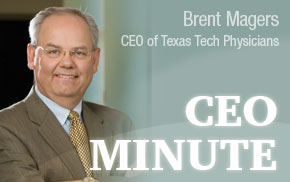 Dr. Ron Banister likes to read books. That is a good thing for me, because he will
sometimes pass them along to me to read. He recently dropped by a book called “Nudge.”
It contains the idea that it is possible to steer people towards better decisions
by presenting choices in different ways.
Dr. Ron Banister likes to read books. That is a good thing for me, because he will
sometimes pass them along to me to read. He recently dropped by a book called “Nudge.”
It contains the idea that it is possible to steer people towards better decisions
by presenting choices in different ways.Sometimes, it is what we call things. For example, one study revealed that when teaching technical drawing, if it is called “geometry” one group of students did better, but if called “drawing” another group did equally well or better. Teachers have changed what they call things. Changing the name worked in this case.
At other times, it is changing where items are placed. Example, to promote a healthy diet among teenagers, broccoli and carrots were placed at eye level in the food serving line and made easily accessible, while junk food was placed in a hard to reach spot. Guess what? Kids ate more vegetables.
Not all experiments with nudging people have worked. For example, green arrows pointing to stairs were put next to escalators to encourage people to take the healthier option. This had almost no effect. (I am guessing people have to be predisposed to doing something for a nudge to work.) Another experiment had green footprints leading to trashcans and it resulted in littering being reduced by 46 percent! Could Texas Tech Physicians nudge people to certain behavior? Probably.
While we cannot “order” patients to do certain things (such as stop smoking, lose weight or even pay their bills), we can use principles from behavioral economics and psychology to persuade people to do what is right. This concept is actually being tested at the University of Southern California School of Pharmacy, which received a $11.5 million grant to reduce inappropriate antibiotic prescribing for acute respiratory infections using principles of nudging those with prescribing power to slow it down.
Asking people to eat more fiber is preaching. Serving whole-wheat cereals in the cafeteria is nudging—especially when easy to access. Threatening to turn people over to a collection agency (necessary in some cases) is negative; but saying (with a smile) to a self-pay patient, “We take MasterCard, Visa, Discover, cash or personal checks. And, by paying now, we can offer you an immediate cash discount.” That is a nudge. It is trying “to influence choices in a way that will make choosers better off, as judged by themselves.”
Texas Tech Physicians is also on the receiving end of nudges. Managed care companies, proposed accountable care organizations, and new financing structures (e.g., the 1115 Medicare waiver program) all are constantly nudging us to a value-driven approach to health care delivery.
